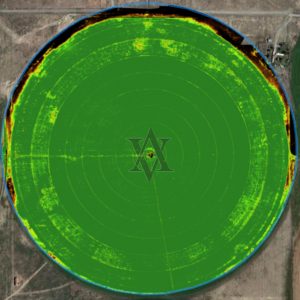Drone use on the farm is a game-changer, and it has been adopted by farmers around the world for the past several years. Farmers have found that adding drones to their tool box has made their lives easier and their business more profitable.
Through NDVI imaging, drones allow farmers to scout their fields more efficiently, often spotting problems two to three weeks prior to being detected by the human eye. The data collected can be used to save substantial amounts of money on inputs such as fertilizer, and farms that use drones are also able to reduce run-off and increase yield. In short, agricultural drone use is a cutting edge technology that can be put to use by the average farmer to increase their profitability and save costs and precious time.

Currently, there are different types of drones on the market: fixed wing and multi-rotor. Each provides the abilities to scout fields, create NDVI images, and generate usable data. However, there are many different factors to take into consideration before purchasing a drone.
Multi-rotor drones are the most recognizable and least expensive drones to purchase. For the farmer who is interested in flying their own drone, this may be their best option. The cost of these start at around $1,200 for the equipment alone. The hidden cost of data analysis is a drawback. Data analysis is offered by multiple companies and can range from $1,000 to $10,000 per year depending on the type of report the farmer wants. Multi-rotor drones also have a shorter battery life when compared with their counterparts. Most batteries on these types of drones last 15 to 30 minutes, but take an hour to charge. This allows the drone to capture data at around 400 acres per hour, but will burn a couple of batteries that each cost $200. If a farmer with a small farm isn’t afraid of the price tag, this might be a good choice.
Fixed wing drones are modeled from the military. These drones are not as common because they cost much more. The cost for an acceptable fixed wing drone starts at roughly $15,000. The data analytics are offered at the same rates as mentioned above. The benefit of using a fixed wing is battery life. A fixed wing drone can cover more than 600 acres per hour, depending on the model, and can be accomplished on the life of one battery. A fixed wing drone is better suited for those who are working on large farms. It is much more efficient to fly the drone one time rather than with multiple flights and battery changes.
Many farmers recognize that drones are the future. However, there is still a bit of a sticker shock. Many farmers don’t want to invest that type of money into the new equipment just yet. Others are afraid to run the risk of damaging a drone and losing out on their investment. Drone service providers such as Apex Views, are the solution to that problem.

Drone service providers give farmers access to the technology at an affordable rate with minimal risk on their investment. Depending on the crop and location, Apex Views and other drone services can be contracted for an average fee of $4 per acre. According to Apex Views’ estimates, farmers who use drone technology have increased their profitability at an average rate of $7,000 per 125 acres.
Whether you are looking to purchase your own fixed-wing or multi-rotor drone or are interested in contracting a service to handle the work for you, drones will increase your profit margin and allow you to save time for important things. Every farmer knows that something will go wrong on the farm every day, so it’s a good idea to let the drone do this work while you focus your efforts on other needs.
Philip Rychlinski and his partner, Michael Beahon, both veterans of the U.S. Marine Corps, own and operate Dearborn, Michigan-based Apex Views, a service disabled veteran owned small business (SDVOSB) providing drone services to states throughout the United States.


